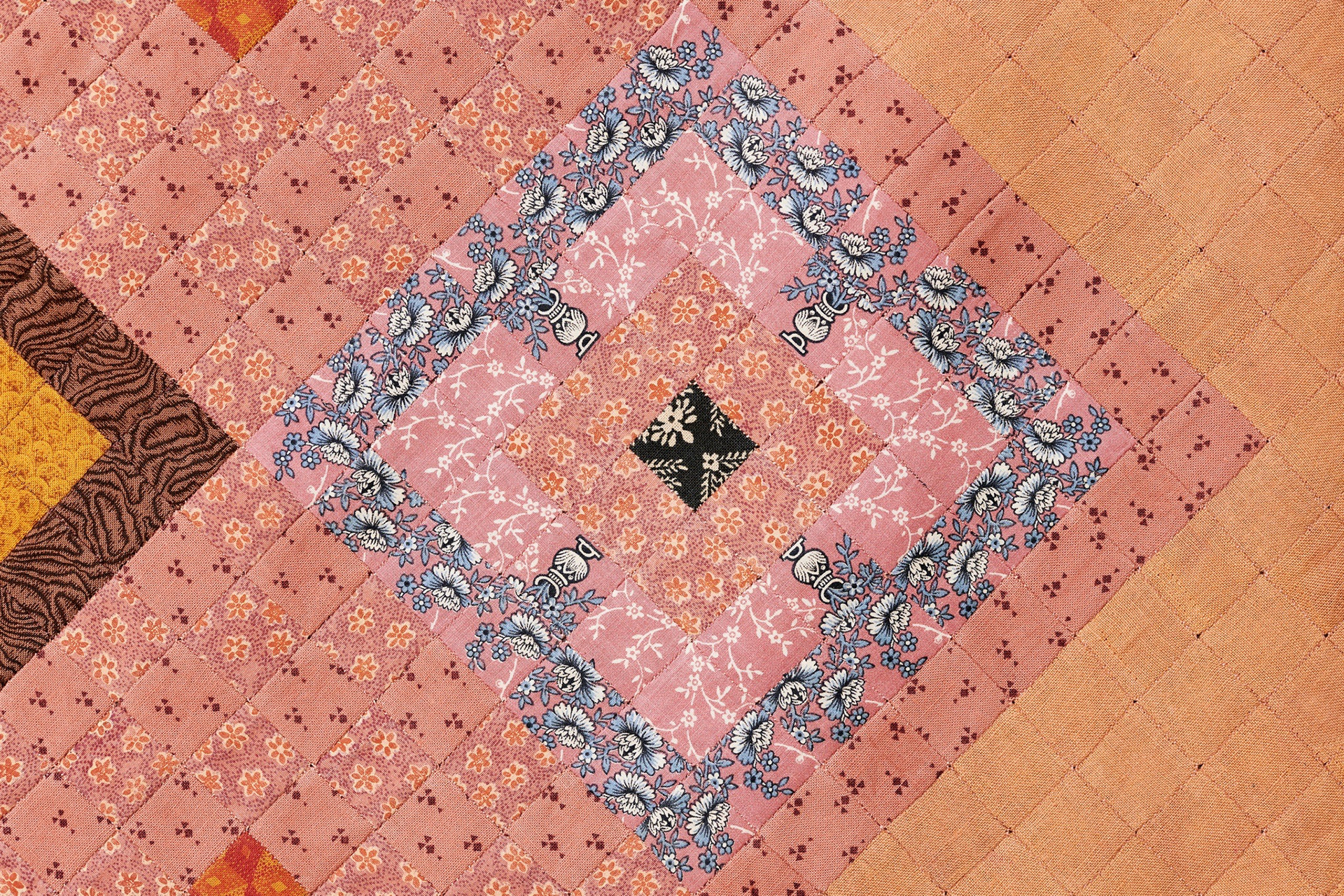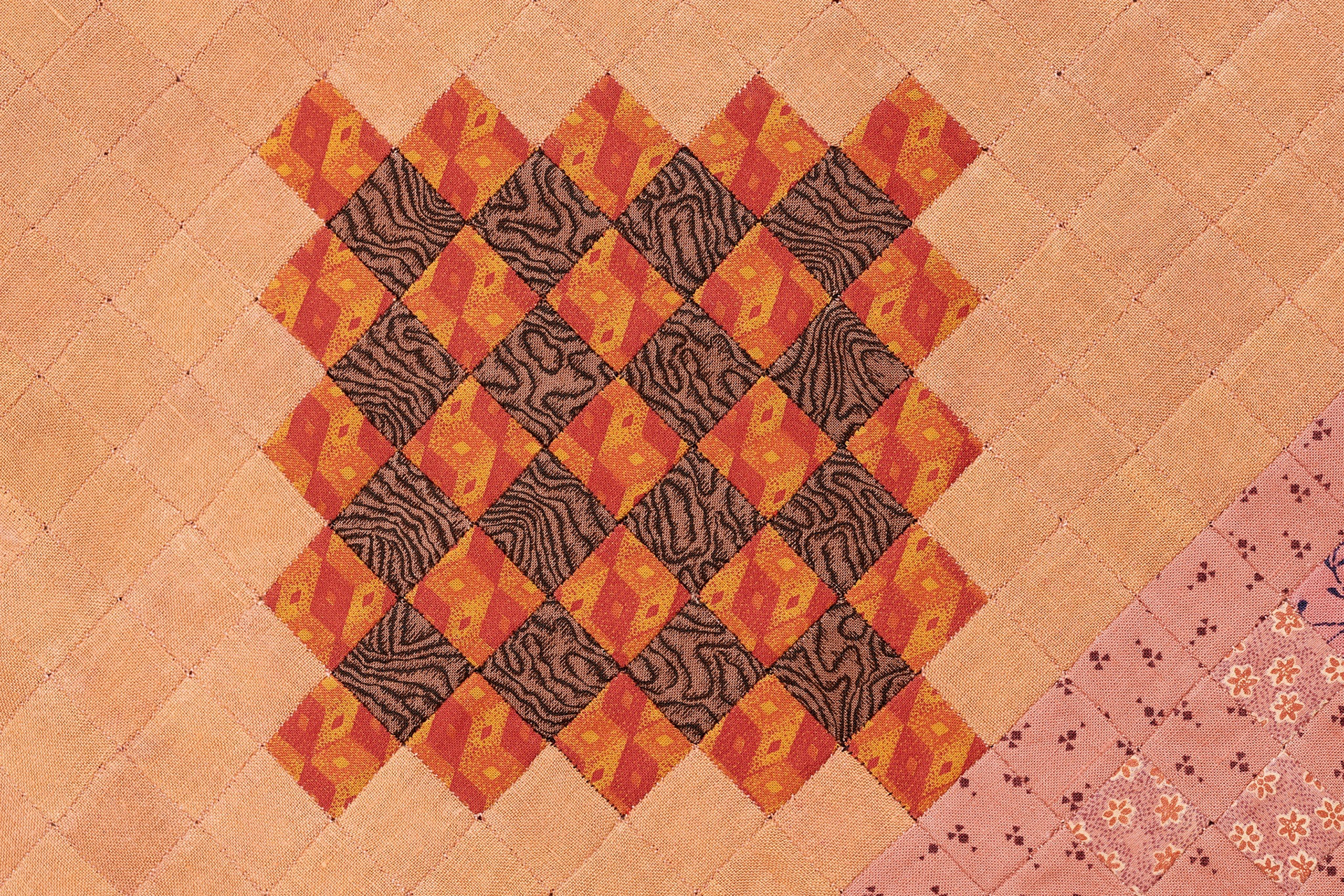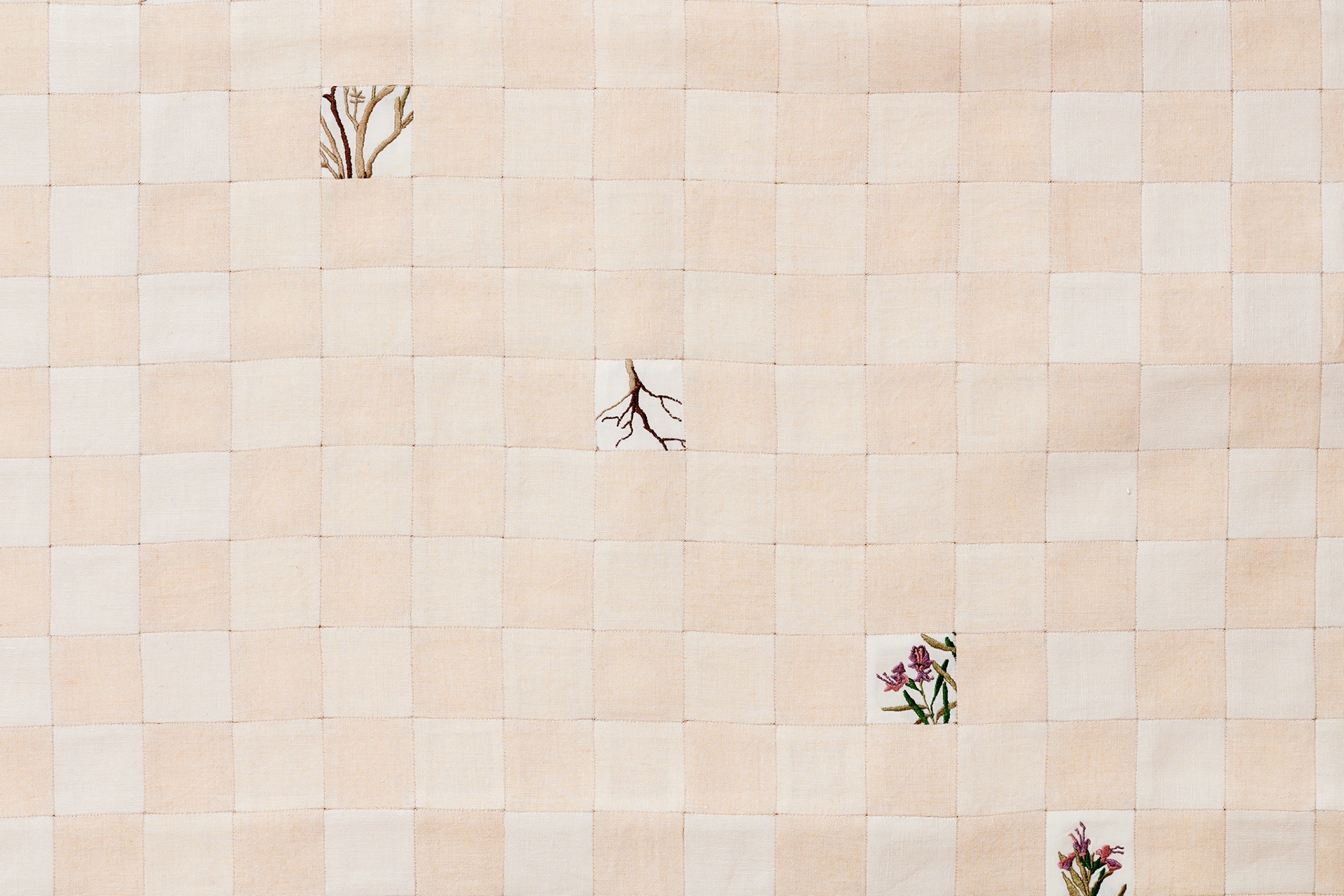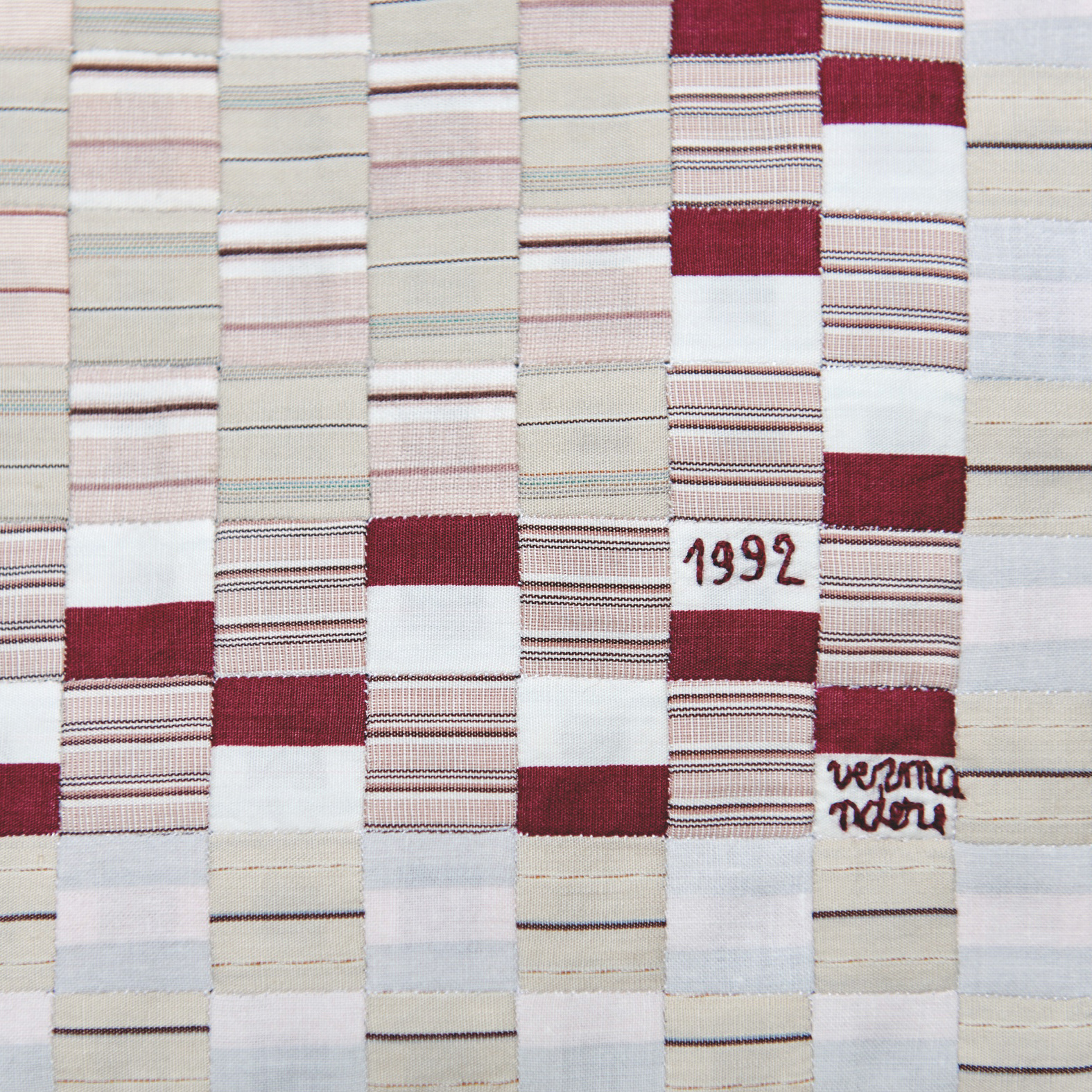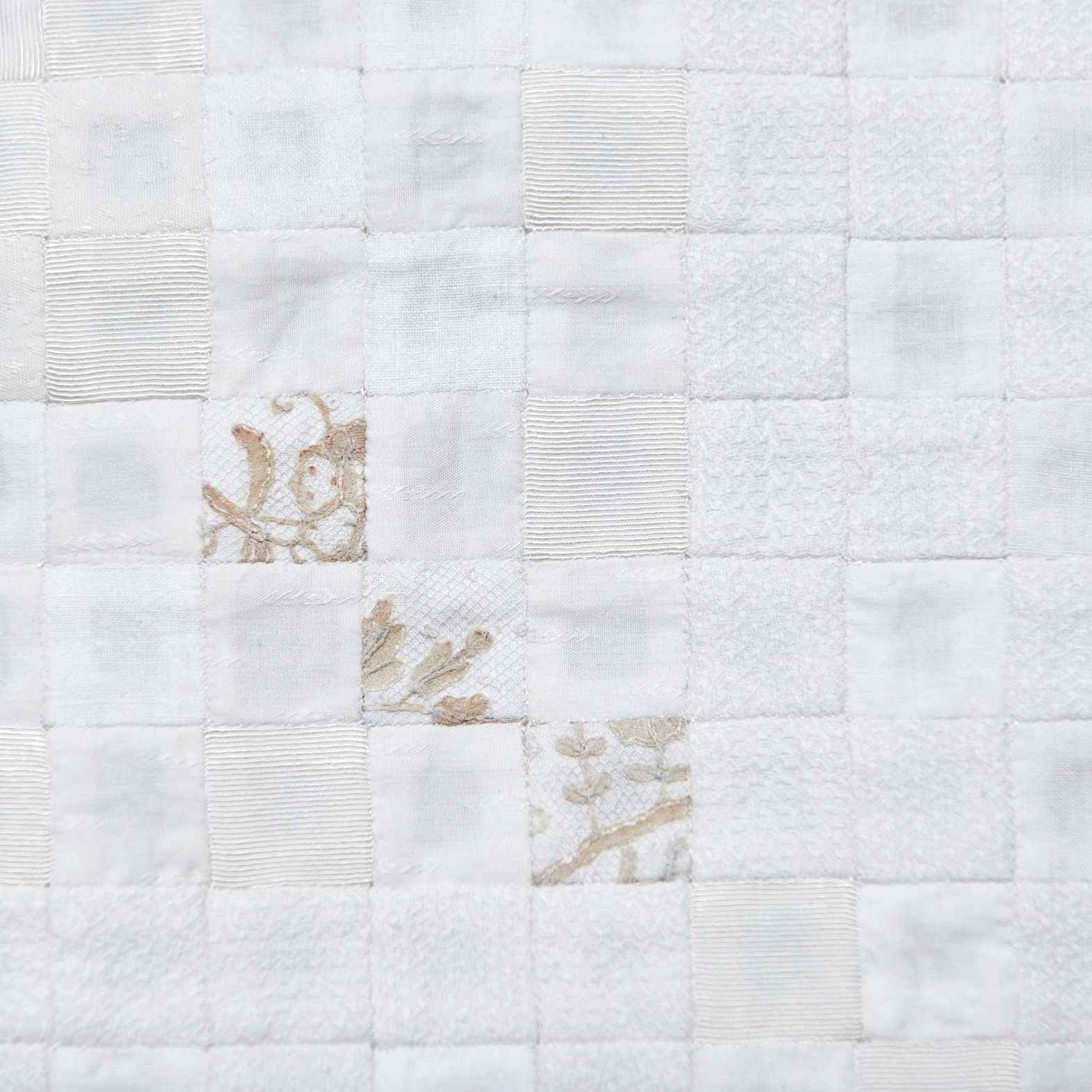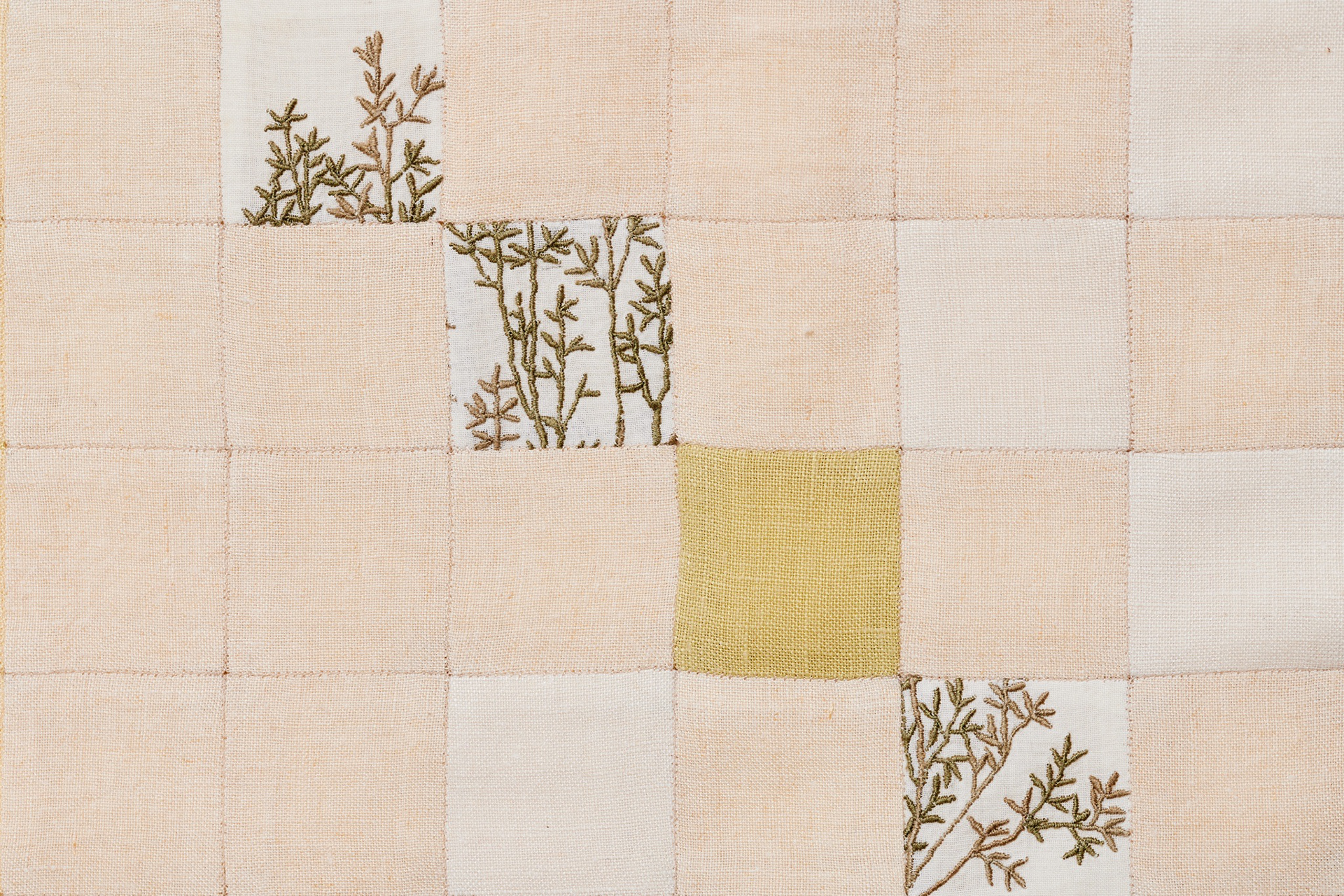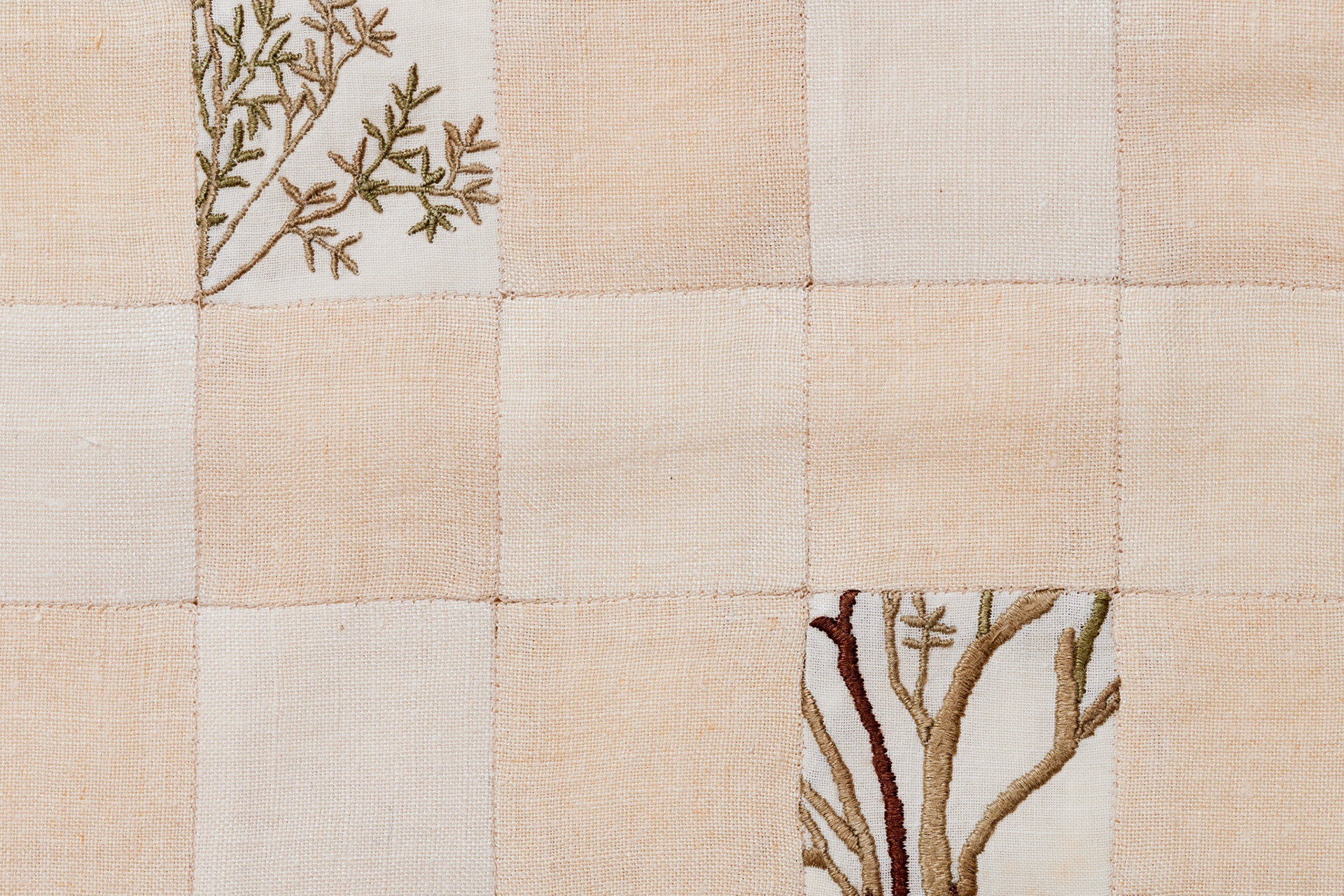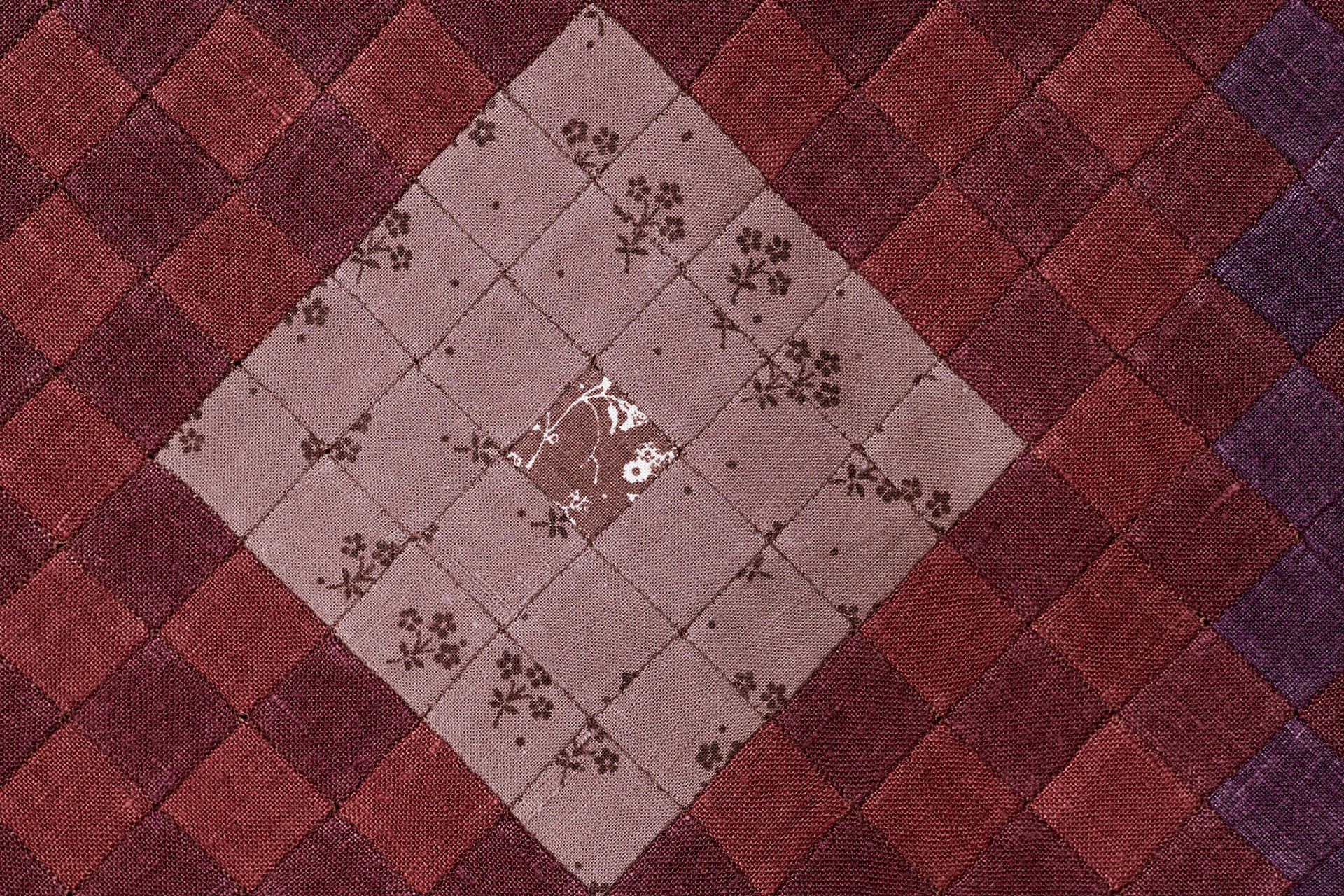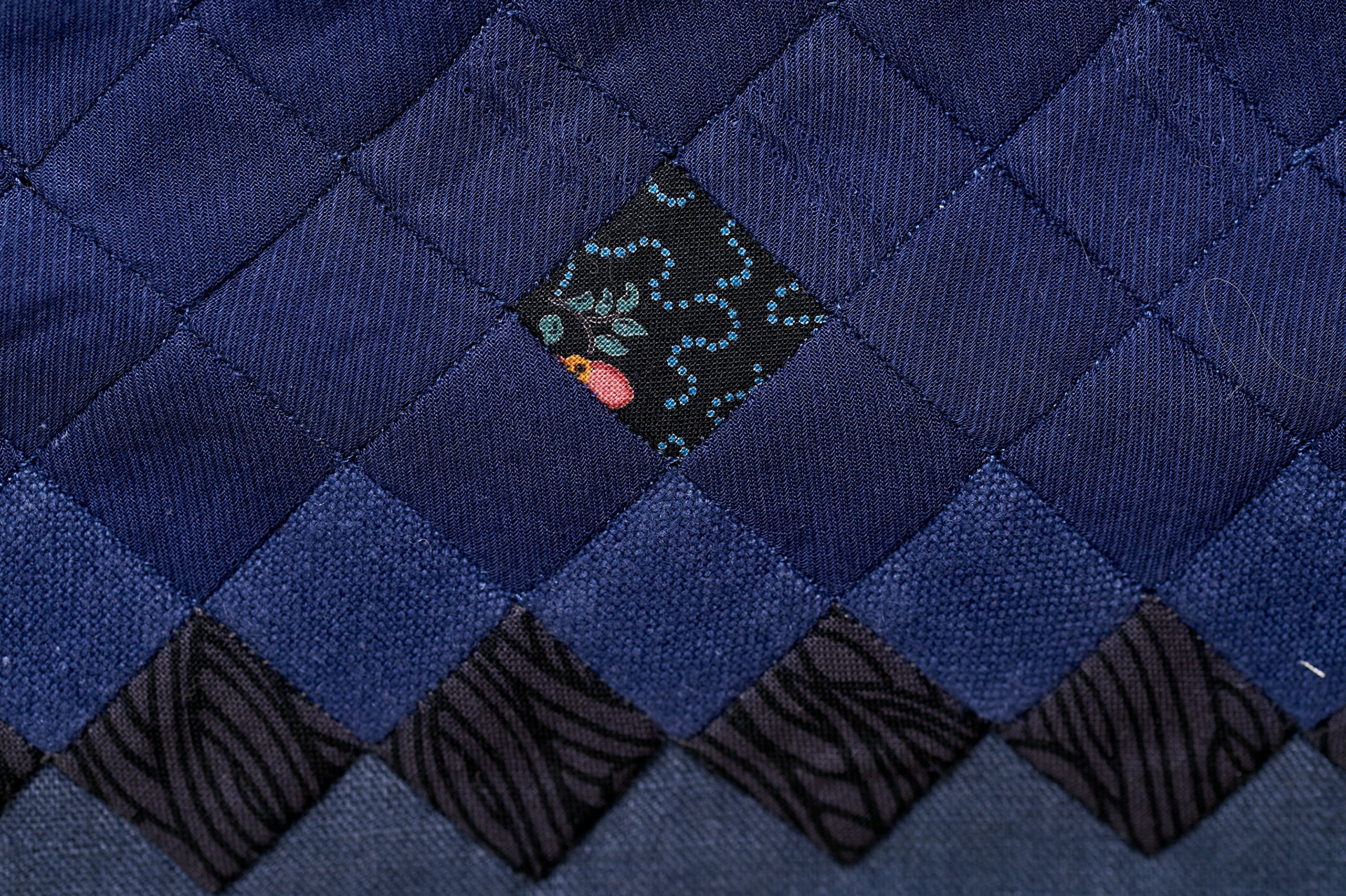Le patchwork : telle est la base des travaux textiles de Marguerite Vermandere. Ce n'est sans doute pas un hasard si elle a choisi cette méthode très ancienne, qui donne la possibilité de jeux infinis dans le cadre d'une grande rigueur. Dans la lignée des Art & Crafts, l'objet, beau sans conteste, doit aussi pouvoir prendre vie dans le quotidien. Derrière l'unité du résultat, la technique est donc à l'œuvre, toute de précision et de patience.
On retourne ici à la vocation originelle du patchwork, qui est de travailler uniquement avec des matières récupérées, recyclées : échantillonniers, tissus trouvés sur les marchés aux puces, vêtements et dentelles anciens. Les fibres choisies, coton, soie, lin, sont toujours naturelles.
Chaque pièce de tissu est lavée ou décatie pour empêcher tout rétrécissement, puis surfilée. Les morceaux de tissu, éventuellement retaillés, sont mis en forme autour de cartons qui servent de support pendant l'assemblage. Lorsque tous les morceaux auront été mis en place et cousus, les cartons pourront être retirés. Les finitions : doublure, surpiquage invisible, ajout éventuel de broderies, de boutons ou de perles, achèveront la pièce.
Si la structure naît de la matière disponible au hasard des découvertes, en revanche, sa construction est mûrement réfléchie. Le choix des couleurs oriente le résultat vers des monochromes, des camaïeux, des contraires et des complémentaires. Les textures mettent en scène l'harmonie et l'opposition, la transparence et l'opacité, les a-plats et le relief La lumière révèle et modifie en même temps leur matière et leur rythme sous notre regard.
Véronique Pouillard



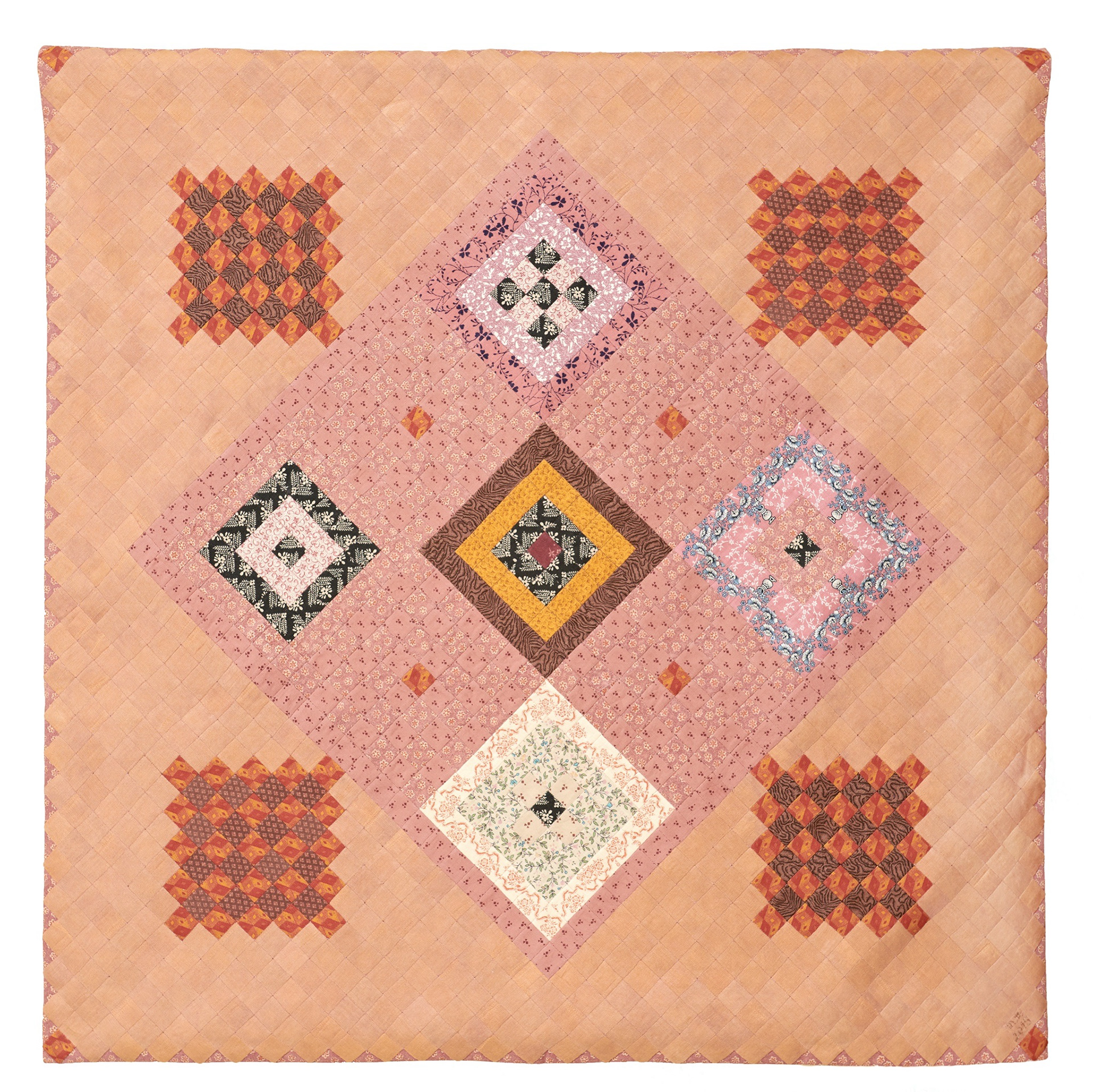




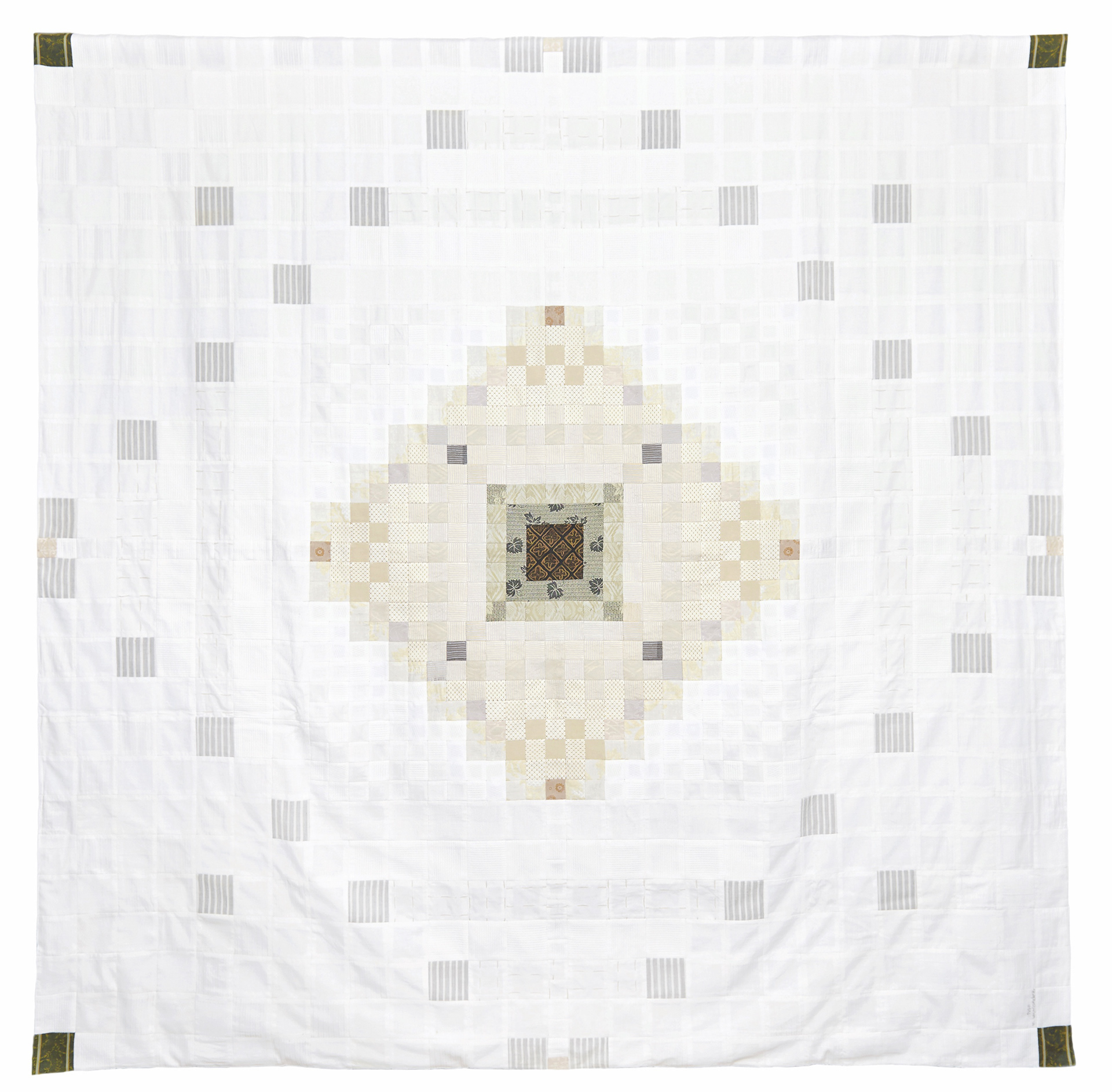



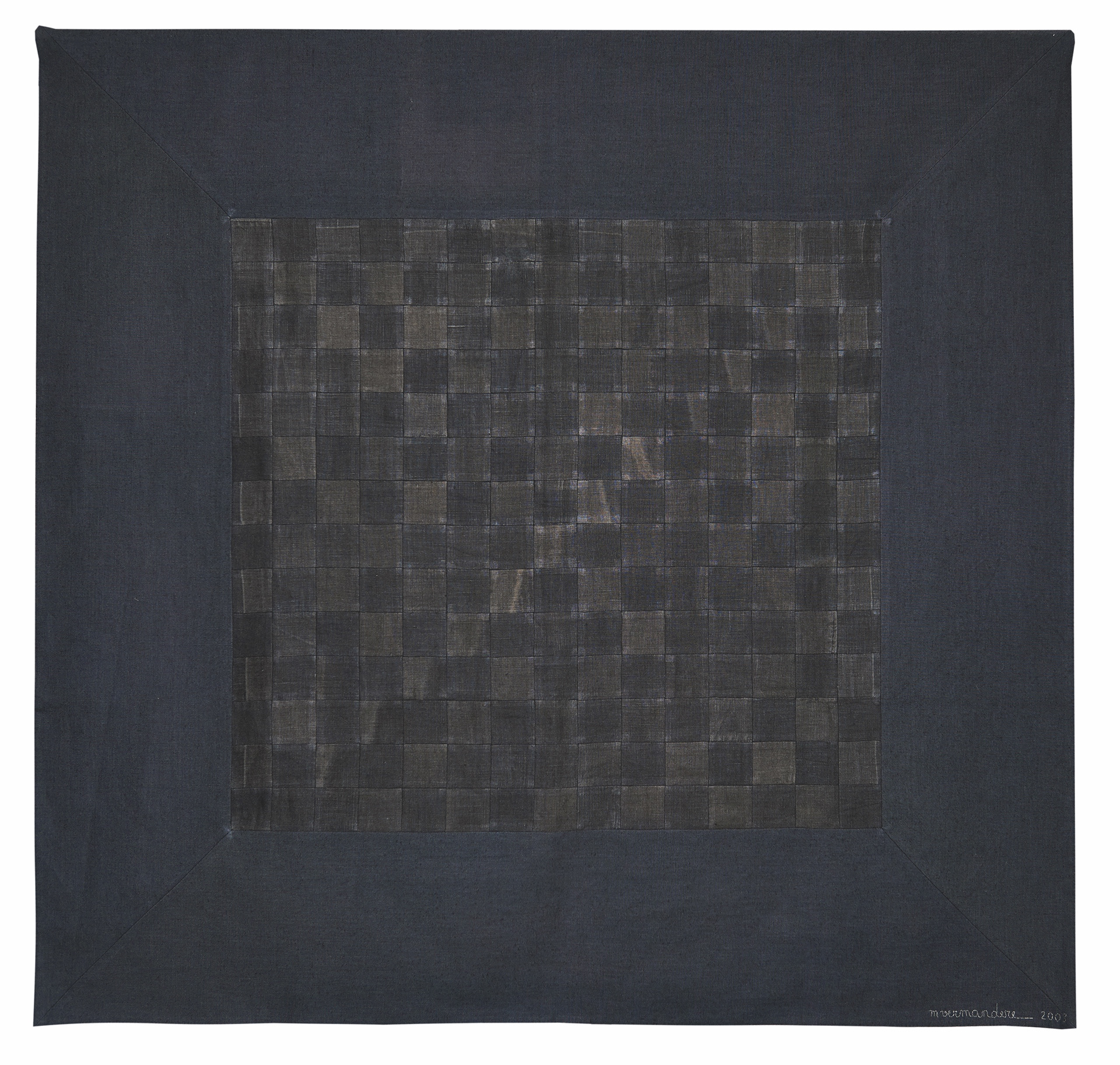


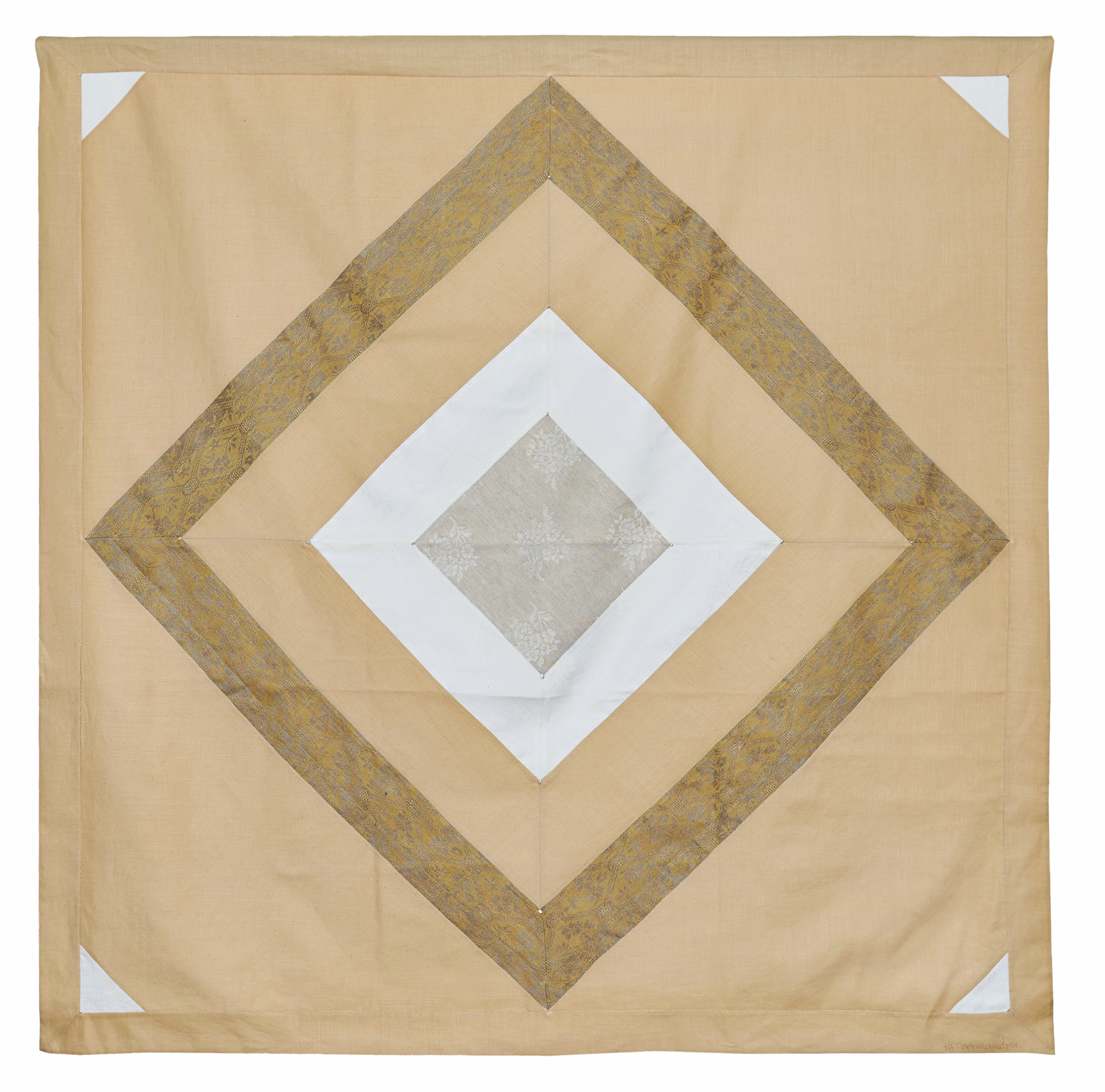









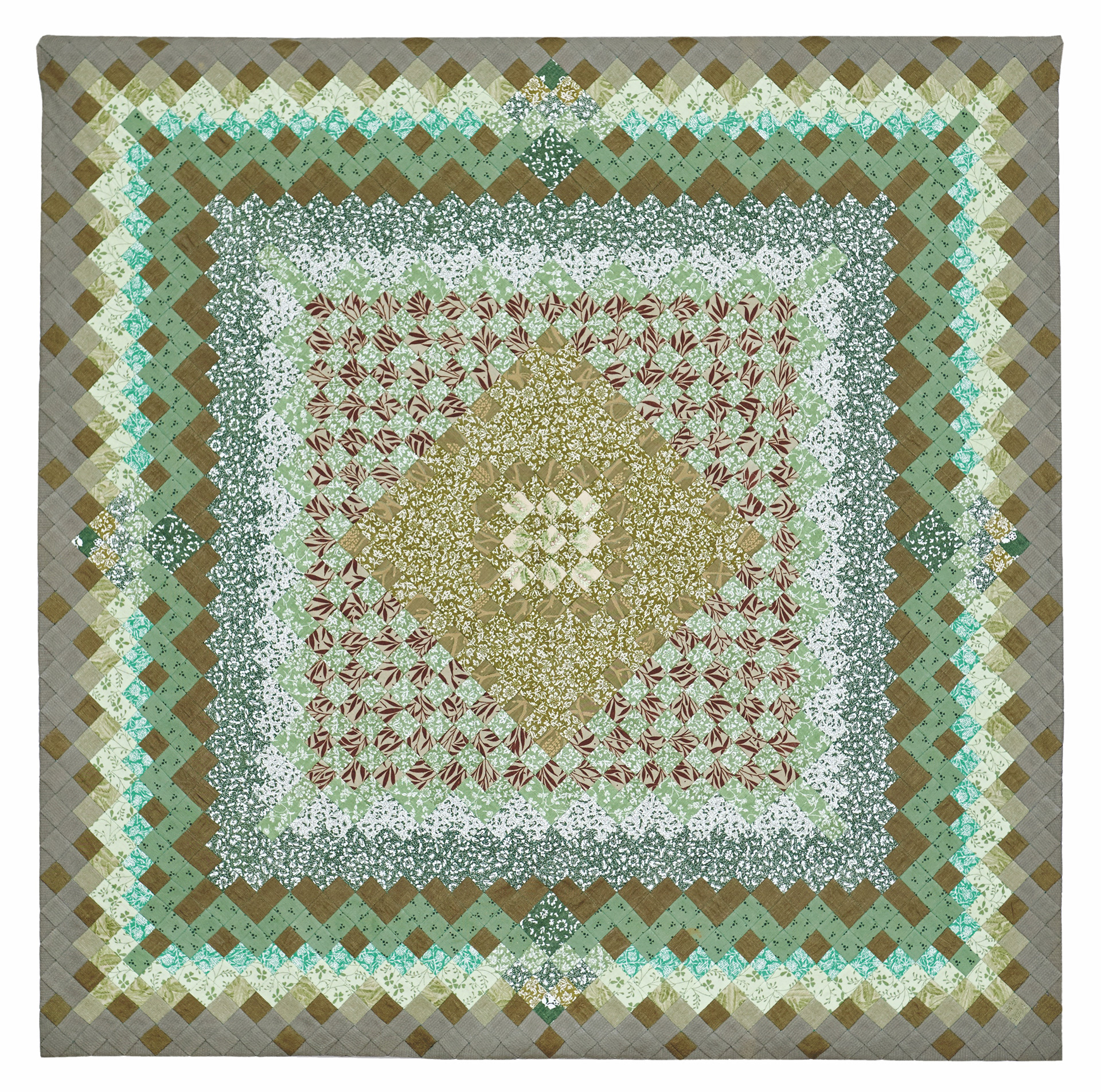





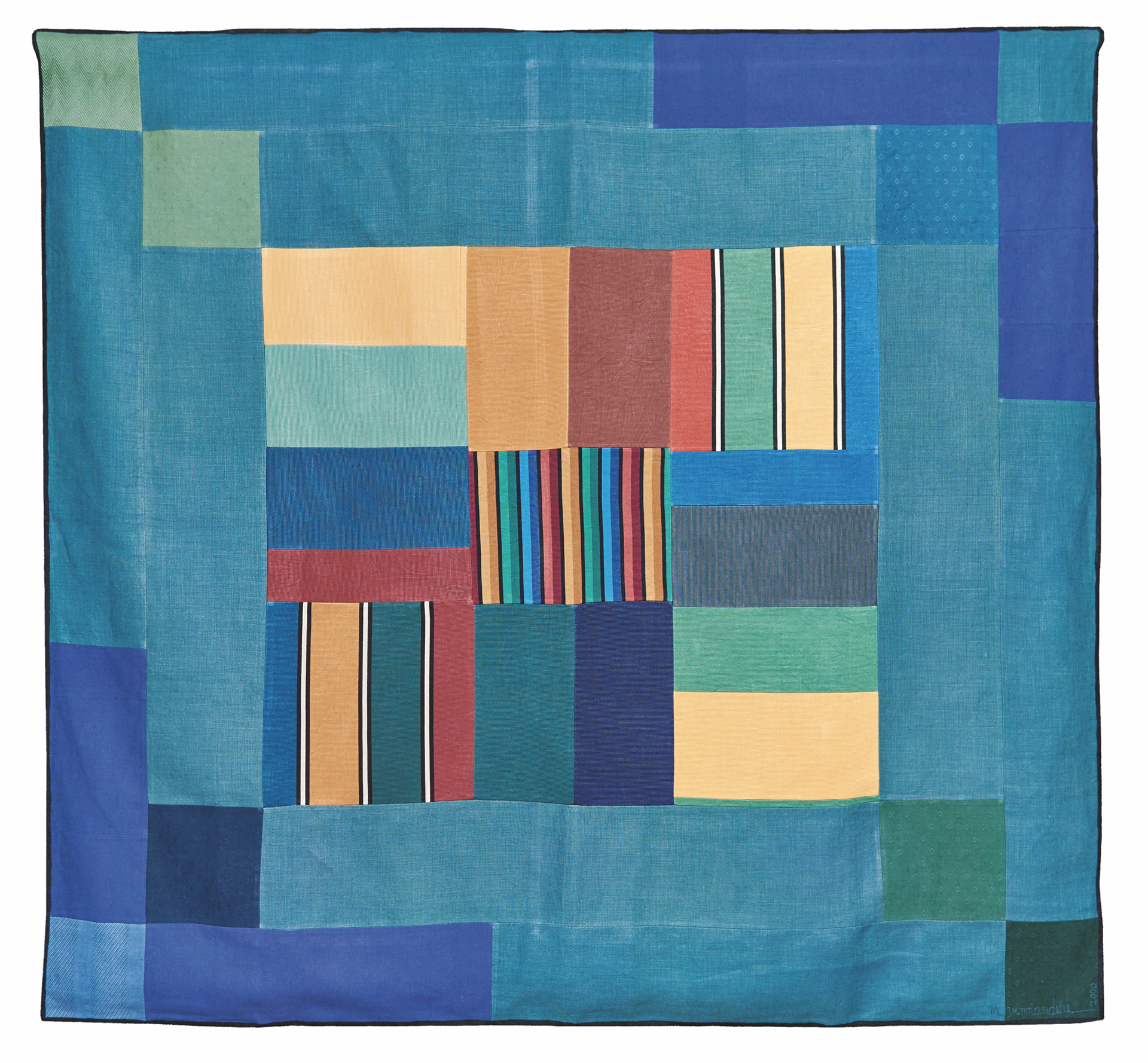










Patchwork is at the origin of Marguerite Vermandere’s textile work. It is not by chance that she has elected this ancient technique that offers infinite possibilities in a very rigorous framework. Following in the footsteps of the Arts & Crafts movement, the object, aesthetic indeed, is also expected to reveal itself in the everyday use. Behind the homogeneous, harmonious result, technique is at work, along with patience and precision.
The works also go back to the original conception of patchwork that is to use only materials that are recycled, reused, and therefore entirely sustainable. All materials come from sample books and swatches, ancien fabrics, clothes, and lace. They have been donated, exchanged, or found in flea markets or attics. Sewing thread is most often vintage, and is sometimes recycled from ancient fabrics. Buttons or pearls used for embellishment are also exclusively vintage. The process behind the textile work is therefore an artistic performance on sustainability.
Each piece of fabric is washed or prepared to avoid any shrinkage. Once dried, each piece is oversewn, then set on an individual piece of cardboard that serves to support the assembling. Pieces are tested, to see if they fit the original intention, then they are all sewn by hand. Once each part of the pattern is in place, it is time to remove the cardboard pieces. Finishing includes lining, and also many other potential operations: quilting, embroidering, adding pearls or buttons that further complement the texture of the fabrics.
The overall structure of each work develops from a chance encounter with materials, yet the construction of every quilt is carefully planned. Among available finds, the choice of materials will orient the palette towards monochrome, tonal shades, or complementary colors. Textures showcase harmony and opposition, transparency and opacity, flats surface and relief. Light reveals and modifies the materials and their rhythm under our eyes.
Véronique Pouillard










